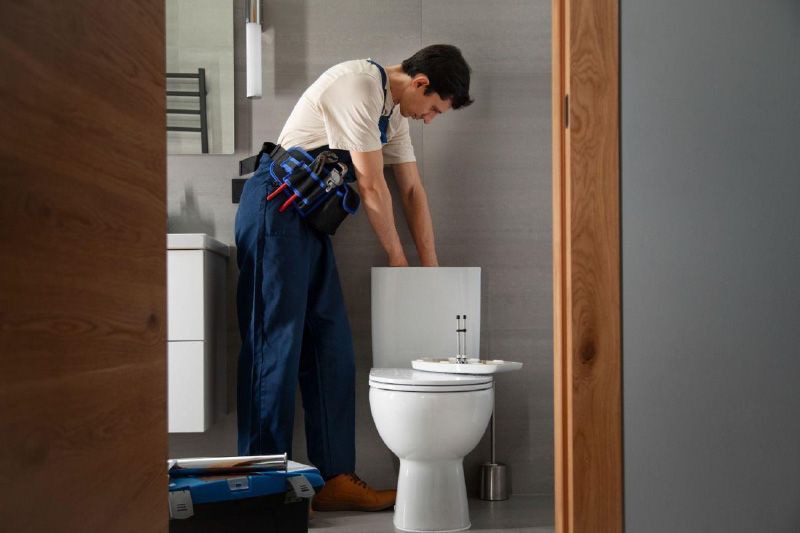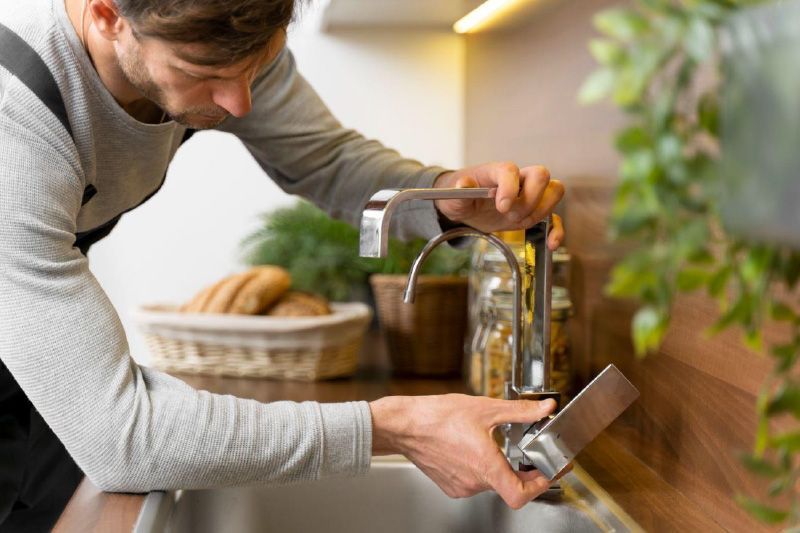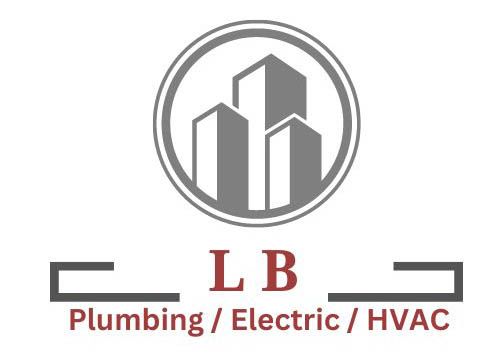10 Effective Ways to Unclog Your Bathroom Sink Drain
Ever found yourself staring at a pool of water in your bathroom sink, wondering how to unclog it? You're not alone. Bathroom sink clogs are super common and knowing how to tackle them can save you time, money, and frustration.
What You'll Learn Here
In this blog, you’ll discover 10 effective ways to unclog your bathroom sink drain. We'll cover everything from simple DIY methods that you can try today to understanding when it's time to call in the pros. By the end, you'll be armed with practical tips and knowledge to keep your sinks running smoothly.
Why It's Important
Clogged bathroom sinks are more than just a nuisance—they can lead to unpleasant odors and even damage your plumbing if left unchecked. Understanding how to unclog a sink is a handy skill that everyone should have. Plus, who wants to deal with standing water every time they brush their teeth?
DIY Methods & Professional Help
We’ll start with some easy DIY methods for unclogging your bathroom sink. If those don’t do the trick, we’ll also guide you on when it might be best to seek professional help. For expert assistance, consider checking out some of our plumbing services.
Ready to dive in? Let's get that drain clear! 🚀
Understanding Common Causes of Bathroom Sink Clogs
Knowing what typically clogs your bathroom sink drain can help you prevent these issues before they become a hassle.
Hair Clumps
Hair is often the biggest offender when it comes to clogged bathroom sinks. It tends to accumulate over time, creating a tangled mess that can block water flow. Regularly cleaning out hair from your sink's stopper can make a huge difference.
Soap Scum and Toiletries
Soap might keep you clean, but it doesn't do the same for your pipes. Soap scum builds up along the walls of your plumbing, especially when combined with other toiletries like toothpaste and shaving cream. This residue can harden and trap other particles, leading to significant blockages.
Grease Buildup and Debris
You might not think of grease as an issue in the bathroom, but cosmetic products like lotions and hair gels contain oils that contribute to clogging. These substances stick to the insides of your pipes, attracting other debris like dust and dirt, which eventually leads to a blockage.
Understanding these common causes helps you choose the right method for unclogging your drain and informs preventive measures to keep your bathroom sink running smoothly.
DIY Methods for Unclogging Your Bathroom Sink Drain
1. Baking Soda and Vinegar Method
Unclogging a drain with baking soda and vinegar is a classic DIY approach that many swear by. This method uses the chemical reaction between baking soda (a base) and vinegar (an acid) to break down clogs and clear your pipes.
How It Works:
- Baking soda acts as a mild abrasive, helping to dislodge gunk.
- Vinegar reacts with baking soda, creating fizzing action that can help break up blockages.
Step-by-Step Guide:
- Clear the Area: Remove any standing water from the sink to ensure the solution reaches the clog.
- Add Baking Soda: Pour 1/2 cup of baking soda directly into the drain.
- Add Vinegar: Follow it up with 1/2 cup of vinegar. You’ll notice fizzing and bubbling—this is a good sign!
- Wait: Let the mixture sit for about 15 minutes to allow the reaction to work on dissolving the clog.
- Flush with Hot Water: Rinse with hot water to help push the loosened debris through the pipes.
This method is particularly effective for clogs caused by soap scum and minor hair build-up. If you find this isn’t enough, it might be time to try another method or consider consulting professional plumbing services.
Exploring other techniques can often provide quick solutions for different types of blockages, making it handy to know multiple DIY strategies for keeping your bathroom sink drain clear.
2. Boiling Water Method
There's a whole arsenal of DIY methods you can try before calling in the pros. One of the simplest and most effective is the boiling water method, especially for tackling minor clogs like soap scum buildup.
How it Works: Boiling water works wonders on soap scum and small debris, melting away the gunk that’s causing your clog.
Steps to Follow:
- Boil a kettle of water.
- Carefully pour the boiling water down the drain in small, steady streams. This ensures that the hot water can effectively break down the buildup.
- Repeat if necessary, but remember to take precautions.
Precautions:
Avoid pouring boiling water directly onto plastic pipes—it could cause damage. Let it cool slightly if you're unsure about your pipe material.
- Always be cautious when handling boiling water to prevent burns or accidents.
- However, if you're dealing with a more serious plumbing issue, you might still need to call a professional. In such cases, our plumbing services can provide expert help.
3. Plunger Method
So, you've tried to unclog the drain with baking soda and vinegar or even boiling water, but the clog's still there? Time to bring out the plunger!
Here's how to properly use a plunger on your bathroom sink:
- Create a Tight Seal: First, make sure there's enough water in the sink to cover the bottom of the plunger cup. This helps create a tight seal.
- Position the Plunger: Place the plunger over the drain opening, ensuring it covers it completely.
- Plunge Away: Push down firmly and pull up quickly, maintaining that tight seal. Repeat this motion several times.
Pro Tip: If you have an overflow drain, like many bathroom sinks do, block it with a wet cloth to ensure you get maximum suction.
Using a plunger can be quite effective for dislodging stubborn clogs caused by hair or debris trapped in the pipes. If this method doesn't work, don't worry—you still have other options before calling in lbplumbingservices.
4. Drain Snake Method
Looking for a more hands-on approach? A plumber's snake is a fantastic tool for unclogging stubborn bathroom sink drains.
How to Use a Drain Snake:
- Remove the Sink Stopper: First, you'll need to remove the sink stopper to get clear access to the drain. This usually involves loosening a pivot rod or lifting it out manually.
- Insert the Snake: Gently insert the snake into the drain until you feel resistance, indicating you've hit the clog.
- Rotate and Push: Rotate the handle while pushing forward to break up or latch onto the clog.
- Extract: Carefully pull the snake back out, bringing any debris with it.
- Test Your Work: Run hot water down the drain to see if it's clear.
Using a drain snake can be incredibly effective for tough clogs that don't respond to other DIY methods like using baking soda and vinegar or boiling water. If you're still struggling with your bathroom drain, check out professional services at Ibplumbingservices.
Tools You Might Need for Unclogging Your Bathroom Sink Drain
When you're ready to tackle that pesky clog, having the right tools for unclogging sinks will make the job a lot easier. Here are some essentials you might need:
- Bucket: To catch any water and debris when you remove parts of the drain.
- Rags: For cleaning up spills and keeping your workspace tidy.
- Wrenches: Both large and small wrenches can help loosen tight fittings and pipes.
- Gloves: Protect your hands from grime and chemicals.
- Old Toothbrush: Perfect for scrubbing away stubborn gunk in hard-to-reach areas.
Having these tools on hand ensures you're prepared for whichever method you choose to unclog your bathroom sink.
Preventive Measures Against Bathroom Sink Clogs
1. Regularly Clean Sink Stoppers and Drains
Keeping your sink stoppers and drains clean is a simple yet effective way to prevent clogs in bathroom sinks. Regular maintenance can go a long way in avoiding the hassle of dealing with blockages. Here are some tips:
- Hot Water: Pour hot water down the drain at least once a week. This helps to dissolve soap scum and other residues that may be starting to build up.
- Vinegar: Use vinegar as a natural cleaner. Pour half a cup of vinegar down the drain, let it sit for about 30 minutes, then rinse with hot water.
2. Use Screens or Grates in Your Sink Drains
Installing screens or grates over your sink drains can catch hair and other debris before they enter the plumbing system. This simple addition can significantly reduce the chances of clogs forming.
- Hair Catchers: These are designed specifically for bathroom sinks and showers, catching hair before it goes down the drain.
- Mesh Screens: These can be placed over the drain opening to catch larger particles and prevent them from causing blockages.
Regular checks and cleaning of these tools are essential to keep them effective.
By incorporating these preventive measures, you can maintain better flow in your bathroom sink drains and minimize the risk of clogs. Remember, regular maintenance for bathroom sinks is key to ensuring they function smoothly all year round!
2. Use Screens or Grates in Your Sink Drains
Prevent clogs in bathroom sinks by installing screens or grates over your drain. These handy devices catch hair and other debris before they can enter your plumbing system, making it easy to maintain your bathroom sinks regularly.
- Why Use Screens or Grates?Catch Hair and Debris: Effectively traps hair and small particles.
- Easy to Clean: Simply remove the screen, dispose of the trapped debris, and rinse.
- Affordable: A low-cost solution with big benefits.
Implementing these preventive measures right after unclogging your bathroom sink drain ensures you won't be dealing with the same problem anytime soon.
When to Call a Professional Plumber for Help?
While most bathroom sink clogs can be tackled with DIY methods, there are moments when calling in a professional plumber is the best course of action. Recognizing these instances can save you time, frustration, and potentially costly damage.
Signs That Indicate You Should Call A Plumber Immediately
- Frequent Clogs: If you're frequently wrestling with clogs despite using various home remedies, it might signal a deeper issue. Persistent blockages often point to significant underlying problems that require expert diagnosis and repair.
- Slow Draining: Water that drains extremely slowly from your bathroom sink, even after you've tried several DIY methods, could be a sign of a more severe blockage lodged deep within your plumbing system. In such cases, professional plumbers have the tools and expertise to locate and remove stubborn clogs.
- Foul Odors: Persistent foul odors wafting from your sink may indicate trapped sewage or other unpleasant materials. These not only cause an unpleasant environment but also pose health risks. Professionals can address these issues safely and effectively.
- Multiple Fixtures Affected: If you notice that multiple fixtures in your home are experiencing drainage problems simultaneously—like toilet backups along with a clogged sink—it usually points to a bigger issue within your main sewer line. This situation requires professional intervention for thorough resolution.
Don't hesitate to reach out to a professional plumber for clogged sinks if you encounter any of these signs. They have the necessary equipment and skills to handle complex plumbing issues efficiently.
Need help? Check out our plumbing services page for more information on how we can assist you when your wash basin is clogged or if you need advice on home remedies to clear a clogged toilet or sink!
FAQs (Frequently Asked Questions)
What are the common causes of bathroom sink clogs?
The primary causes of bathroom sink clogs include hair clumps, soap scum, toiletries, grease buildup, and debris in the plumbing system. Understanding these causes can help you prevent future clogs.
What DIY methods can I use to unclog my bathroom sink?
Effective DIY methods for unclogging your bathroom sink include using baking soda and vinegar, boiling water, a plunger, and a drain snake. Each method has its own steps and effectiveness depending on the type of clog.
How does the baking soda and vinegar method work?
The baking soda and vinegar method works by creating a chemical reaction that helps dislodge clogs. To use this method, pour 1/2 cup of baking soda followed by 1/2 cup of vinegar into the drain. Allow it to sit for about 30 minutes before flushing with hot water.
When should I consider calling a professional plumber?
You should consider calling a professional plumber if you experience frequent clogs despite trying to clear them yourself, if water drains extremely slowly even after multiple attempts, or if there are persistent foul odors coming from your sink. Additionally, if multiple fixtures in your home are affected simultaneously, it may indicate a more serious issue.
What tools do I need to unclog my bathroom sink?
Essential tools for unclogging your bathroom sink may include a bucket, rags, wrenches, gloves, and an old toothbrush for cleaning purposes. These tools will help you effectively tackle various types of clogs.
How can I prevent future clogs in my bathroom sink?
To prevent future clogs in your bathroom sink, regularly clean your sink stoppers and drains using hot water or vinegar. Additionally, consider installing screens or grates over your drains to catch hair and debris before they enter the plumbing system.





